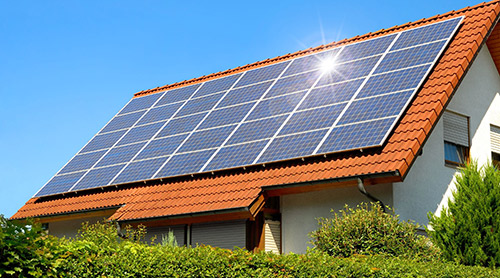Which is Right between Evacuated Tubes and Flat Panel Solar Collectors?
The solar collector is a significant aspect of a solar pool heating system. The job of a solar collector is pretty simple. It sits in the sun, absorbs the heat from the solar radiation, and transfers it to where you require. However, if you want to use a solar pool heating kit efficiently, the collectors need to absorb and retain a large volume of sunlight daily. There are indeed two time-tested collectors available, i.e., flat panels and solar evacuated tubes.
Understanding the Difference between Evacuated Tubes and Flat Panels –
Cost –
Cost is the primary consideration between solar evacuated tubes and flat-panel collectors. Solar evacuated tubes can cost around 20%-40% more than flat-panel collectors. When comparing prices, you need to consider cost per BTU capacity and annual performance. In cold climates, evacuated tubes will cost less per BTU.
Location contributes significantly to the cost. In some areas, it may take more or less for one type of collector than the other to heat the same amount of water. For example, two or three flat-panel collectors produce the same in a cold climate as one solar evacuated tube collector. However, the flat panel solar collectors provide little or no heat in cold areas.
Performance –
Solar evacuated tubes work better in colder or cloudy weather conditions than flat-panel collectors. This is due to the presence of a vacuum in the glass tube that allows the tube collectors to retain the maximum percentage of heat collected. As a result, solar vacuum tube collectors work very well in freezing conditions where flat panels won’t work.
If you need hot water for Laundromats, car washes, or manufacturing processes, you can consider solar evacuated tubes pool heating system. The evacuated tube can produce any hot water in cold climate conditions, while flat-panel collectors are unable to do so.
Design –
Flat panels come with an unsealed enclosure which can make them prone to condensation with time resulting in corrosion. However, it does not affect the actual performance of a flat panel collector. If the flat panel collectors are damaged, they will continue working and can be repaired. You can replace it with time.
On the other hand, evacuated tubes come with sealing with a vacuum. This ensures higher heat retention. If the vacuum tube is to lose its vacuum, you can get it fixed easily by simply replacing the tube.
Installation –
Generally, solar evacuated tubes remain unaffected by sun angle and orientation than flat-panel collectors. This is because they have a circular design which allows sunlight to pass at a maximum angle throughout the day from morning to night.
Flat-panel collectors are very sensitive to the solar angle and may need racking systems or other elevations to increase production.
Bottom line –
When considering the right solar collector technology, you should contact the Latitude51 Solar team today. They will be more than delighted to suggest you the right fit for your solar pool heating applications.



Comments
Post a Comment